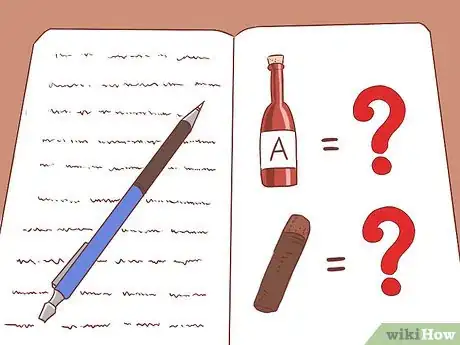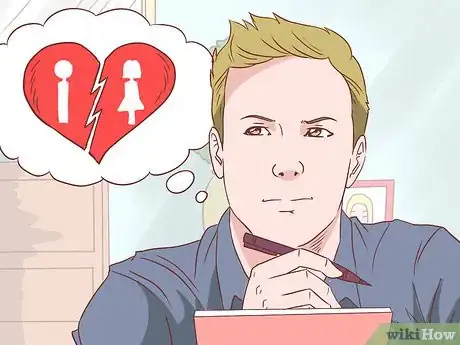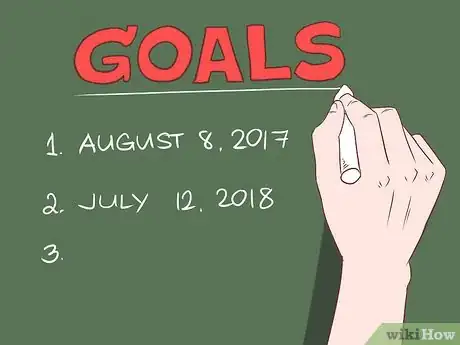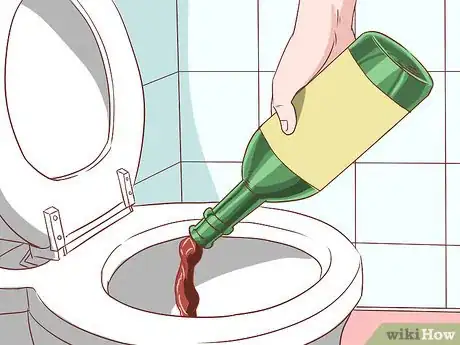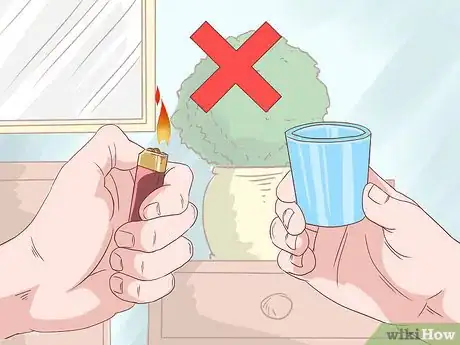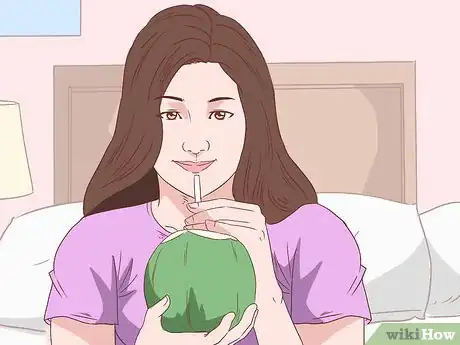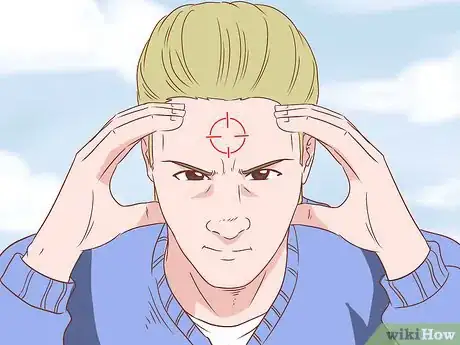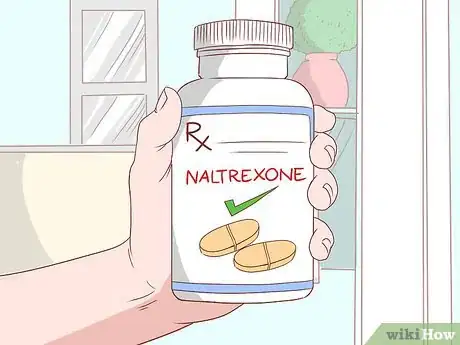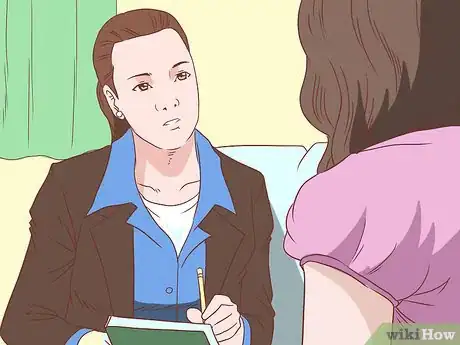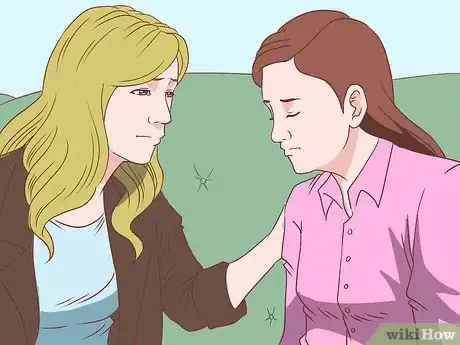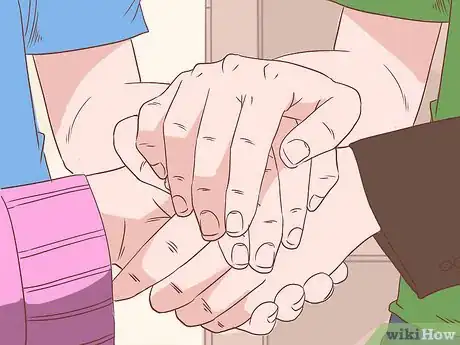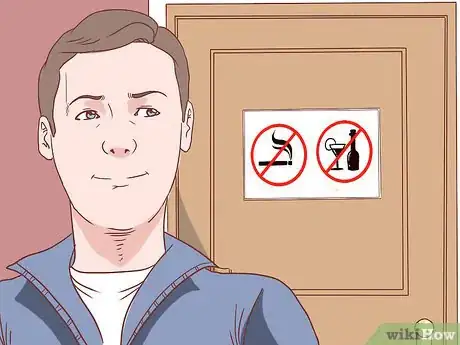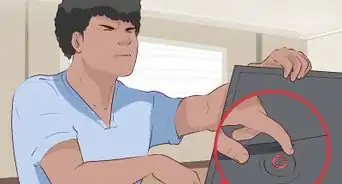This article was co-authored by Trudi Griffin, LPC, MS. Trudi Griffin is a Licensed Professional Counselor in Wisconsin specializing in Addictions and Mental Health. She provides therapy to people who struggle with addictions, mental health, and trauma in community health settings and private practice. She received her MS in Clinical Mental Health Counseling from Marquette University in 2011.
There are 14 references cited in this article, which can be found at the bottom of the page.
wikiHow marks an article as reader-approved once it receives enough positive feedback. In this case, 89% of readers who voted found the article helpful, earning it our reader-approved status.
This article has been viewed 299,202 times.
Smoking and drinking. Drinking and smoking. These 2 addictions can be difficult to overcome, but not impossible. Believe it or not, quitting alcohol and cigarettes at the same time is recommended, as going cold turkey once can help you recover faster. So, how do you do it? Read on to learn what you can expect when you stop smoking and drinking—we believe in you.
Steps
Committing to Quit
-
1Write down how alcohol and tobacco affect you. Having a written record of the negative effects of alcohol and tobacco will serve as a constant reminder of why you have chosen to quit.[1] Keep it in a place you can reference it easily.
- Reflect on any decreased physical or mental health as a result of tobacco and alcohol. Have you gained weight or decreased fitness as a result of using? Do you become angry without alcohol, or anxious without tobacco?
- Many people choose to quit addictions because they feel sick and tired of feeling sick and tired, and engaging the addiction is more draining than the positive effects of the substance.[2]
- Consider how tobacco and alcohol interfere with your relationships and social life.
- Think of financial costs alcohol and tobacco cost you.
-
2Find your triggers. Use a notebook to record the times throughout the day you smoke or drink alcohol.[3] Record what feelings or situations preceded using alcohol and tobacco. Avoid situations that may trigger you in the future.
- A trigger could be getting into an argument with your family or something not going well at work.
- Because alcohol and nicotine are highly correlated substances, one can trigger the other. For example, if you begin drinking, you may want to have a cigarette.[4]
Advertisement -
3Set goals. Be clear on whether you want to stop altogether or slowly taper your use. While some may want to quit for social or health reasons, others may want to quit due to medical reasons or because they have an addiction. Reflect on your reasons and then choose your goals. If you are an alcoholic, it is best to cut alcohol out altogether and not taper it down.[5]
- People who smoke have a much harder time quitting alcohol and also tend to relapse more than people who do not smoke.[6] Set goals that include concurrently quitting both nicotine and alcohol together.
- Write down a date for each goal to solidify the commitment.
Preparing for Change
-
1Get rid of all addictive substances in the house. Throw away all the cigarettes and pour alcoholic drinks down the sink.[7] . Ask the other members of your household to support you in keeping your home free of alcohol and tobacco products, so that you can avoid temptation on a daily basis.
-
2Trash anything that reminds you of smoking or drinking. Don't hold onto your favorite lighter, your flask, or your shot glasses. A big lifestyle change like this is best maintained if you avoid seeing constant reminders of your old habits.[8]
-
3Avoid places where people smoke or drink. Being near places where smoking and drinking are encouraged can be dangerous when you are trying to quit.[9] Avoid bars and other places where alcohol and tobacco are likely to be used.
- Sit in the nonsmoking sections of restaurants and choose non-smoking hotel rooms
-
4Take a break from people who regularly drink/smoke. Surrounding yourself with people that engage in behaviors you are trying to avoid can be tempting. Explain to them that you are removing the substances from your life and will no longer engage in activities that revolve around drinking or smoking. Create distance from people who will not support you in your desire to be free from alcohol and tobacco.[10]
-
5Avoid high risk situations. High risk situations can include feeling lonely, tired, angry, and hungry.[11] These situations can leave you feeling vulnerable and more prone to use alcohol or tobacco. Be aware of when you feel you may be approaching any of these situations and learn to prevent them from starting.
- Make sure you get enough sleep, eat throughout the day, and don't isolate yourself socially to avoid these high risk situations. If you feel anger coming on, remind yourself to relax and let it pass without depending on alcohol and cigarettes.
Coping with Cravings
-
1Replace using alcohol and tobacco with more positive options. Remember that using alcohol and tobacco provides positive reinforcement because they help you cope with stress and tension.[12] Try to pinpoint what positive aspects you experience as a result of using alcohol and tobacco, and brainstorm different outlets to obtain the same release. Coping can include relaxation and deep breathing, talking to a friend, or taking a walk.
-
2
-
3Enjoy a new hobby. Adding a new hobby can help you focus your energy positively and add a sense of meaning to your life.[15] Try something new that looks fun and interesting.
- New hobbies can include surfing, knitting, writing, or learning to play the guitar.
-
4
-
5Find ways to relax. Relaxation is key to recovery. Mounting tension can lead to relapse.[18] If you don't feel like you have time to relax, think about the time you spend engaging with alcohol and tobacco, and replace it with relaxation.
- Activities such as taking a walk, reading, and meditation can be effective ways to relax.[19]
-
6Allow yourself some other treats. Everyone needs some vices in life - just make them healthier ones overall. Indulge in a little ice-cream every now and then, or buy some fizzy drinks with lots of carbonation. While staying healthy is important, give yourself a little leeway so that you don't feel denied all the indulgences that you used to enjoy.
-
7Stay focused. The better you cope with cravings the lesser your chance of relapsing. People who quit smoking and drinking at the same time tend to experience less severe withdrawal and face lower relapse risk.[20]
Coping With Withdrawal
-
1Observe withdrawal symptoms. When ceasing alcohol or tobacco, the body may experience withdrawal without continued use. Withdrawal symptoms from tobacco and alcohol can include: anxiety, depression, fatigue, headache, nausea, shaking, stomach cramps, and elevated heart rate.
-
2Monitor withdrawal. While tobacco withdrawal can be unpleasant on both body and emotions, alcohol withdrawal can be dangerous. Severity of alcohol withdrawal symptoms varies by how much you drink, for how long, and your condition of health.[21] Some symptoms can start within hours after drinking, peak within days, and improve within the week.[22]
- Alcohol withdrawal can lead to symptoms which causes severe mental and neurological problems. This may include body tremors, agitation, restlessness, fear, hallucinations and seizures. Seek medical attention if you experience these symptoms.
- If you are a long-term and heavy drinker, consider a medically supervised detox.[23]
-
3Seek medication intervention. While no prescription medication exists to concurrently treat alcohol and nicotine together, interventions exist to treat alcohol dependence and nicotine addiction.
- Prescription medication can be used to treat alcohol dependence, including use of naltrexone, acamprosate, and disulfiram. These medications can help with withdrawal symptoms and relapse.[24]
- Choose a method for nicotine withdrawal. While some people quit "cold turkey", others choose to taper off nicotine exposure in order to reduce withdrawal symptoms. Many options are available for nicotine replacement such as gum, a patch, nasal sprays and prescription medications (such as bupropion) while your body adjusts to lower levels of nicotine.
Engaging in Treatment
-
1Find a therapist. It's hard to beat addiction on your own, and a therapist can be a consistent source of accountability and support. Working with a therapist can include discussing emotional triggers, finding coping strategies, preventing relapse, and digging deeper to understand the emotional causes of addiction.
- Staying consistent with therapy is important, especially for addressing relapse prevention.[25]
- Addiction can coexist or contribute to psychiatric disorders such as schizophrenia, depression, anxiety, or bipolar disorder. Together with therapy, prescription medications may treat concurrent psychiatric disorders that contribute to addiction.[26]
-
2Obtain a medical evaluation. A medical evaluation can help pinpoint how cigarettes and alcohol have affected your body. Work with a medical professional to help improve your bodily health. They can also offer prescription medication to lower nicotine dependence.
- Both alcohol and nicotine can seriously harm your body. Be honest with your medical doctor and request tests to assess the health of your liver, heart, kidneys, and lungs.
-
3Seek inpatient treatment. If you fear you cannot quit on your own, consider a recovery facility. An intensive treatment facility can help you address the physical and emotional challenges of addiction and quitting in a supervised and supportive setting. A program can help you decide how to detox and will monitor your physical and emotional state as you come down from alcohol and nicotine. Treatment programs include intense medical and psychological supervision.
- Treatment often includes intense individual and group therapy that targets mental health conditions. Medication may be prescribed to treat and monitor psychiatric disorders while in treatment.
Seeking Support
-
1Enlist the help of supportive friends and relatives. You're more likely to stop drinking and smoking if you seek support from those around you. Ask them to support you by not drinking and smoking around you.
-
2Find accountability. If you have other friends who are looking to quit drinking and smoking too, make a pact for healthier choices. Check in with each other daily and hold each other accountable for your choices.
-
3Find local support groups. Reach out to smoke-free groups, such as smoke-free Alcoholics Anonymous and other support groups, like Nicotine Anonymous.[27] Talking about your efforts in a supportive environment with people who share similar experiences can make all the difference in your attempts to quit.
-
4Live in a sober living community. If you are concerned about living with people who may trigger your alcohol or nicotine use, consider finding a sober house that bans alcohol and nicotine. All individuals living in a sober house agree to live sober and create an accountable community for each other.
References
- ↑ http://www.helpguide.org/articles/addiction/alcohol-addiction-treatment-and-self-help.htm
- ↑ http://alcoholrehab.com/addiction-articles/ready-to-stop-addiction/
- ↑ http://www.aafp.org/afp/1998/0415/p1879.html
- ↑ http://alcoholrehab.com/addiction-recovery/stop-smoking-in-recovery/
- ↑ http://www.helpguide.org/articles/addiction/alcohol-addiction-treatment-and-self-help.htm
- ↑ https://www.pnas.org/doi/full/10.1073/pnas.1413947111
- ↑ http://www.helpguide.org/articles/addiction/alcohol-addiction-treatment-and-self-help.htm
- ↑ http://www.helpguide.org/articles/addiction/overcoming-drug-addiction.htm
- ↑ http://www.helpguide.org/articles/addiction/overcoming-drug-addiction.htm
- ↑ http://www.helpguide.org/articles/addiction/overcoming-drug-addiction.htm
- ↑ http://www.addictionsandrecovery.org/recovery-skills.htm
- ↑ http://www.addictionsandrecovery.org/recovery-skills.htm
- ↑ http://www.aafp.org/afp/1998/0415/p1879.html
- ↑ http://www.adaa.org/understanding-anxiety/related-illnesses/other-related-conditions/stress/physical-activity-reduces-st
- ↑ http://www.helpguide.org/articles/addiction/overcoming-drug-addiction.htm
- ↑ http://www.mayoclinic.org/healthy-lifestyle/quit-smoking/in-depth/nicotine-craving/art-20045454?pg=1
- ↑ https://www.psychologytoday.com/blog/the-high-functioning-alcoholic/201006/summertime-parties-and-the-beach-quick-guide-coping
- ↑ http://www.addictionsandrecovery.org/recovery-skills.htm
- ↑ http://www.addictionsandrecovery.org/recovery-skills.htm
- ↑ https://www.pnas.org/doi/full/10.1073/pnas.1413947111
- ↑ https://www.nlm.nih.gov/medlineplus/ency/article/000764.htm
- ↑ http://www.helpguide.org/articles/addiction/alcohol-addiction-treatment-and-self-help.htm
- ↑ http://www.helpguide.org/articles/addiction/alcohol-addiction-treatment-and-self-help.htm
- ↑ https://www.drugabuse.gov/publications/drugfacts/treatment-approaches-drug-addiction
- ↑ https://www.drugabuse.gov/publications/drugfacts/treatment-approaches-drug-addiction
- ↑ http://pubs.niaaa.nih.gov/publications/arh26-2/90-98.htm
- ↑ http://www.aafp.org/afp/1998/0415/p1879.html
About This Article
It can be tough to stop smoking and drinking, but with the right game plan and support, you can do it! Try to avoid bars and other places where you might be tempted to smoke and drink. Hang around with friends and family who don’t drink or smoke while you get sober. Consider starting a new hobby to help distract yourself and meet new people. When you get stressed, try some deep breathing, listening to relaxing music, or going for a walk to clear your head. If it feels like too much to cope with on your own, join a local support group or find a therapist to help you through it. For more tips from our co-author, including how to set goals for your sobriety, read on.
